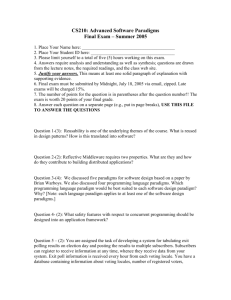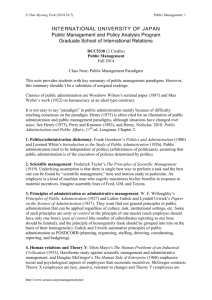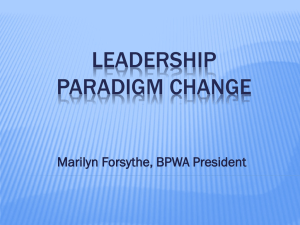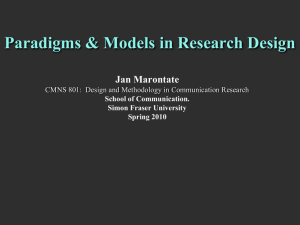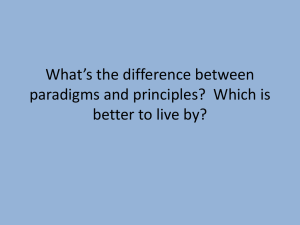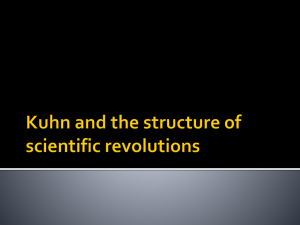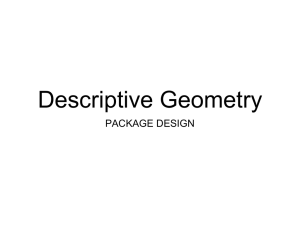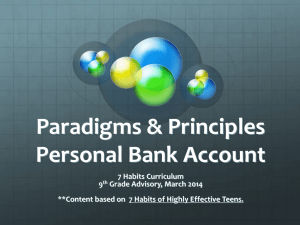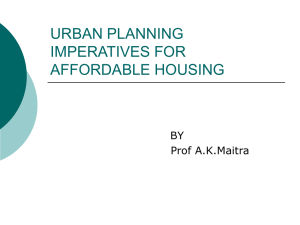The Changing paradigms: Thomas Clarke and Stewart clegg Book
advertisement
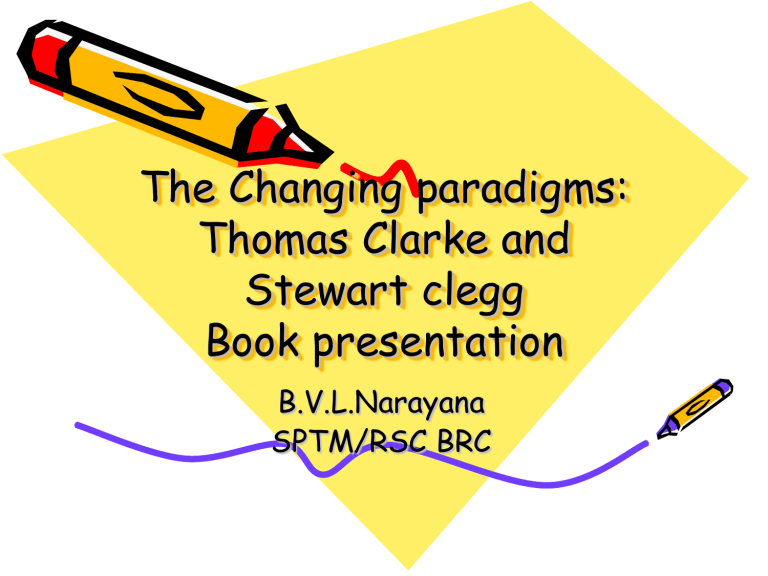
The Changing paradigms: Thomas Clarke and Stewart clegg Book presentation B.V.L.Narayana SPTM/RSC BRC Structure of presentation • • • • Introduction Definitions and concepts Why paradigms Nature and organization of scientific knowledge—Thomas Kuhn • Trends in changes in business environment • Changing paradigms in 21st century • Conclusion Introduction • Book on – Critical shifts in management science – Fast changing business environmentnecessitating collation and synthesizing of knowledge on management – Projection of likely shifts in 21st century – Uses PARADIGMS as the central concept • Authors – Stewart clegg-Director –CforM, UTSsociologist – Thomas Clarke-Prof OF Mgmt ,UTS Definitions • Paradigm – Linguistics- pattern, exemplar, class of objects with similarities – Philosophical or theoretical framework • Directs how knowledge is to be generated – Kuhn (1992-1996) • Set of practices that define a scientific discipline— generate a body of knowledge • This defines the understanding of nature of world and nature of processes in it • Is not clearly definable—but examples can be shown; learning by doing Paradigm • Is an organizing principle-based on beliefs which are non verifiable—a-priori accepted • Helps answer questions of – What is truth—epistemology – What is reality –ontology – Determines methodology –to generate knowledge • Debates generated – knowledge –true—belief-justification—mental states • • • • • • Evidentialism vs. Reliabilism Internal vs external Relativism vs objectivity--reality Constructivism vs Positivism—methods Apriori vs posterior Synthesis vs analysis Paradigms • Kuhn –The structure of scientific revolutions (1962) – Three phases in paradigms generation and shift • Pre paradigm phase • Normal science • Paradigm wars and shift – Incommensurability of paradigms – Scientific knowledge growth is episodic – Driven by exemplar books, ideas • Eg newtonian mechanics– wave theory of matter • Certainty in business environment –ranging uncertainty—determinism – indeterminism • Collectivism – individualism—rise of Protestantism • local to global to global local Debates • Are multiple paradigms – Necessary – Are they constructive – Can they coexist • Is there a paradigm shift occurring? – New debates • Domination vs voice – – – – – – – ideas –critical theory Gender –feminism Time –modernism—post modernism Practice-Prescription vs description Technology –Content vs process Research methods – variance vs processual Pioneers vs first followers Paradigms Characteristic Positivism Interpretivism Belief/values Truth is objective Truth is subjective Disposition Avoid uncertainty Tolerate uncertainty Knowledge creation Prove or disprove apriori Construct knowledge out of hypotheses shared meanings Methods Inductive , quantitative Deductive , qualitative Contexts Large , global Small, local Strategies Competitive Collaborative Tools , methods Surveys, variance analysis Cases, causal analysis Decision making Synaptic, rational Incremental, political Theories in management Industrial economics, competitive strategy, strategic groups, TCE Behavioral economics, RBV, Resource dependency Control systems Markets , impersonal Hierarchies, clans, emotional Practice orientation Prediction, prescriptive Understanding, reason, descriptive Changing paradigms • Paradigm – Means of understanding the world—basis for informed action – Shift from accepted beliefs to frames of reference— lenses – From perceptions to changing realities – Implications • Multiple competing paradigms • Multiple suggested solutions and concepts • Appearance of Fads—fragmentation of knowledge— confusing practioners • Requires synthesizing– to facilitate practice Identifiable trends • Business environment – arrival of the knowledge based information economy, – Presence of constant innovation, – Unpredictable and discontinuous change, – Rapid loss and demise of organizations unable to adapt, – Globalization and global connections, – Ability to sustain organizational capabilities and – Need for developing network and reciprocity of relationships. Projected shifts CHARACTERISTIC FROM TO EMERGING THEMES PARADIGMS Classical, neoclassicalorthodoxy Multiple changing paradigms Capital –knowledge, fixed to flexible, short term to long term, centralization to decentralization, Representation to participation, national to global, institutional help to self help, hierarchy to networking, competition to collaboration, all in one to one in all; directioning to cooption GLOBALIZATION--context Local/national international Globalization Convergence of markets, adaptation to local contexts—global thinking acting locally DIGITALISATION— technological drivers Manual, analogue, stand alone Electronic, digital networks Personal to work group computing, islands to integrated systems, internal to interenterprise STRATEGY—creative plans Strategic planning, rational strategy Strategic thinking, innovation, core competency Disintermediation—all in one, disintegration— virtual structure, convergence, multi dimensionality, heterogeneity—across contexts ORGANISATION—design and practices Hierarchy, Taylorism Intelligent , networked rationality Flat, virtual, markets, collaborations, interlinkages, flexibility and speed of decision making, process orientation; Flexible working systems STAKE HOLDERS—interests and indicators Share holders, financial indicators Stake holders, non financial parameters Multiple, changing and balancing of multiple interests SUSTAINABILITY-future outlook Profit, growth, control Sustainable enterprise Survival, adaptation and sustainable-internally and externally Implications • Indian railways – What is our role in the government? – What business are we in?—customers requirements vs capabilities • Railway staff college – What is our role with respect to IR’s role – What is our core activity? PRACTICE BELIEFS VALUES THANK YOU ANY QUESTIONS DISCIPLINE— BODY OF KNOWLEDGE PARADIGM IDEAS APPLICATION
